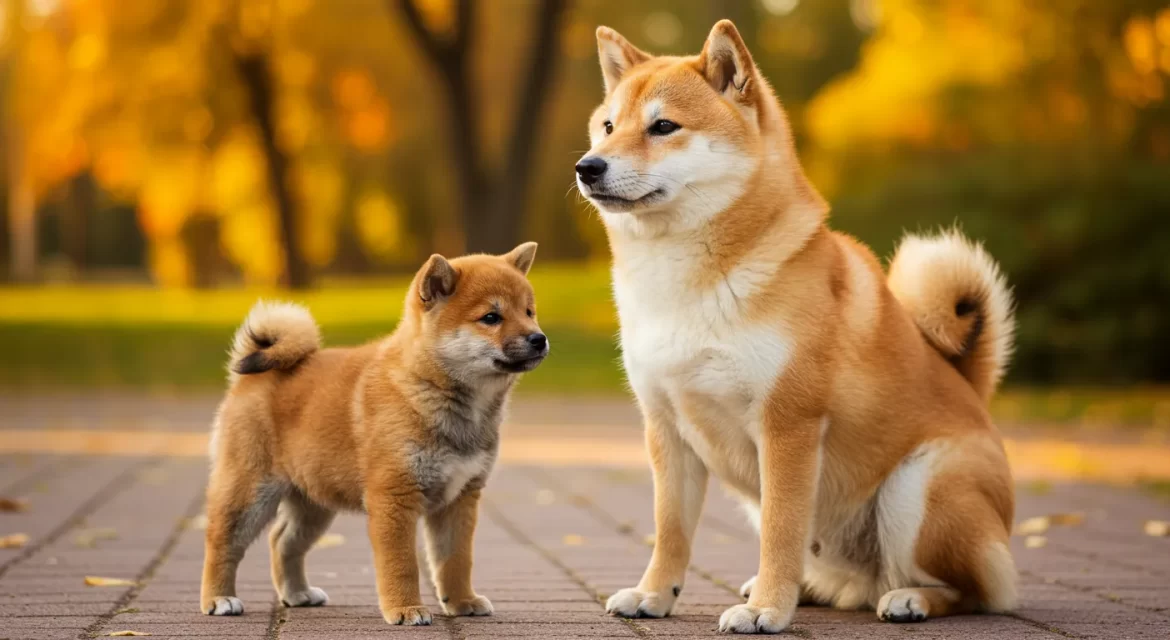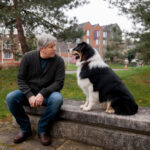Thinking of welcoming a Shiba Inu into your home? You’re not alone. With their fox-like features, bold personalities, and ancient heritage, these iconic dogs have captivated pet lovers worldwide. But one of the first questions new or aspiring owners often ask is: “How long do Shiba Inus live?”
To answer that, it’s worth looking briefly at the Shiba Inu origin and history. This small but resilient breed originates from Japan and dates back more than 2,000 years, having been developed initially as a hunting dog in the rugged mountains of Japan. Despite their compact size, this Japanese dog breed, Shibas are known for their independence, agility, and surprising toughness.
In this blog post, we’ll explore the average lifespan of the Shiba Inu, common health issues that can affect their longevity, and tips to help your Shiba live a long, happy life.
What Is the Average Lifespan of a Shiba Inu?
The Shiba Inu typically lives between 13 and 16 years, with some individuals reaching 18 years or more when provided with excellent care and veterinary attention. According to the American Kennel Club, the average life span of this Japanese dog is approximately 15 years.
This longevity places the Shiba Inu among the longer-living small to medium-sized breeds. In fact, a study published in Scientific Reports found that long-faced breeds, such as the Shiba Inu, tend to have a longer lifespan than brachycephalic (flat-faced) breeds, with an average lifespan of around 14 years.
Life Expectancy of a Shiba Inu by Gender (on average):
-
Male Shiba Inu: 12–15 years
-
Female Shiba Inu: 13–16 years (Females tend to live slightly longer)
Also read: Male vs Female Shiba Inu Breed
Growth Stages of a Shiba Inu
| Stage | Age Range | Key Characteristics |
|---|---|---|
| Neonatal Stage | 0–2 weeks | Eyes and ears closed; completely dependent on the mother for warmth and nutrition. |
| Transitional Stage | 2–4 weeks | Eyes open, starts to hear sounds, begins wobbly movements. |
| Socialization Stage | 4–12 weeks | Starts interacting with littermates and humans; critical for behavioral development. |
| Juvenile Stage | 3–6 months | Rapid growth, teething, basic training begins; curious and active. |
| Adolescence | 6–12 months | Hormonal changes, some behavioral challenges; important for consistent training. |
| Young Adult | 1–2 years | Reaches full size; energy levels remain high; better impulse control. |
| Mature Adult | 2–7 years | Fully grown and emotionally mature; ideal time for regular exercise and health checks. |
| Senior Stage | 8+ years | Slower metabolism, joint care needed; may develop age-related health issues. |
Factors Influencing Shiba Inu Lifespan
While genetics plays a role in a Shiba Inu’s life expectancy, several environmental and lifestyle factors can significantly impact their health and longevity.
1. Genetics and Breeding
Responsible breeding practices are essential for minimising hereditary health issues. Reputable breeders screen for common genetic conditions such as hip dysplasia and patellar luxation to ensure healthier puppies.
2. Nutrition
Providing a balanced diet tailored to your Shiba Inu’s age, weight, and activity level is essential. Obesity can lead to various health problems and potentially shorten one’s lifespan.
3. Exercise and Mental Stimulation
Shiba Inus are active and intelligent dogs that require regular physical exercise and mental stimulation to thrive. Daily walks, playtime, and puzzle toys can help keep them fit and mentally sharp.
4. Regular Veterinary Care
Routine check-ups with a veterinarian can help detect and address health issues early. Vaccinations, dental care, and parasite prevention are vital components of maintaining your Shiba Inu’s health.
Common Health Issues in Shiba Inus
Shiba Inus are generally a healthy breed, but like all dogs, they can be prone to certain health conditions that may require attention. Understanding these conditions can help you detect problems early and ensure your Shiba Inu remains healthy and happy. Below are some of the most common health issues found in Shiba Inus:
1. Hip Dysplasia
Hip dysplasia is one of the most common orthopaedic issues affecting Shiba Inus. It occurs when the hip joint doesn’t form properly, causing the ball and socket to rub together rather than fit smoothly. This leads to pain, inflammation, and arthritis over time. While this condition is hereditary, environmental factors such as obesity or lack of exercise can exacerbate the symptoms.
Symptoms:
- Difficulty getting up after resting
- Lameness or limping
- Difficulty jumping or climbing stairs
- Decreased activity levels or reluctance to exercise
Management and Treatment:
- Weight management to reduce strain on the joints
- Joint supplements, such as glucosamine and chondroitin, can help with cartilage repair
- Physical therapy and low-impact exercises, like swimming, to strengthen muscles around the joint
- In severe cases, surgery (such as hip replacement) may be recommended
Regular vet check-ups are essential for monitoring your Shiba Inu’s joint health, particularly as they age.
2. Patellar Luxation
Patellar luxation is a condition where the kneecap (patella) dislocates from its normal position, causing pain and lameness. This condition can be present at birth or develop over time. Shiba Inu dog breeds are prone to patellar luxation.
Symptoms:
- Lameness or limping in one or both legs
- Occasional “skipping” or “hopping” as the dog tries to compensate for the dislocated patella
- Difficulty walking or getting up
Management and Treatment:
- Mild cases can often be managed with weight control, joint supplements, and anti-inflammatory medications to reduce pain and inflammation.
- In severe cases, surgical intervention may be necessary to reposition the patella and stabilise the joint.
- Regular grooming sessions can also help monitor for any changes in mobility, especially if your Shiba Inu is showing signs of discomfort when moving.
Early detection of patellar luxation can help prevent further complications, so keep a close eye on your Shiba Inu’s mobility and consult your veterinarian if you notice any signs of lameness or limping.
3. Hypothyroidism
Hypothyroidism is a condition where the thyroid gland does not produce enough thyroid hormone. This hormone is crucial for regulating metabolism, and a deficiency can cause various symptoms, including lethargy, weight gain, and skin problems. Shiba Inus are more prone to hypothyroidism than other breeds.
Symptoms:
- Lethargy or sluggishness
- Weight gain despite a normal appetite
- Hair loss or a thinning coat
- Skin infections or dry, flaky skin
- Cold intolerance
Management and Treatment:
- Thyroid hormone replacement therapy is the most common treatment for hypothyroidism. Once diagnosed, your Shiba Inu will need lifelong medication to regulate hormone levels.
- Regular vet check-ups to monitor thyroid function are essential to ensure your Shiba Inu receives the proper treatment.
- Maintaining a healthy weight and monitoring food intake can help manage weight gain associated with this condition.
4. Atopy (Allergies)
Atopy, or environmental allergies, is another common condition in Shiba Inus. These allergies can be triggered by pollen, dust mites, mould, and other environmental factors. Shibas may also develop food allergies that contribute to skin and digestive issues.
Symptoms:
- Excessive scratching, biting, or licking
- Red or inflamed skin, especially around the paws, ears, and belly
- Watery eyes or a runny nose
- Hair loss or hotspots due to frequent scratching
- Digestive issues such as vomiting or diarrhoea (in case of food allergies)
Management and Treatment:
- Antihistamines or steroid medications can help manage the allergic response, but they should only be used under the guidance of a vet.
- Regular bathing with hypoallergenic shampoos helps soothe the skin and reduce irritation.
- Identifying and avoiding allergens, such as specific foods or environmental triggers, can help prevent flare-ups.
- Immunotherapy, also known as allergy shots, may be an option for severe cases.
5. Dental Disease
Dental health is an important, but often overlooked, aspect of Shiba Inu’s overall health. Like many small to medium-sized dog breeds, Shiba Inus are prone to dental disease, which can lead to gum infections, tooth loss, and other health issues if not appropriately managed.
Symptoms:
- Bad breath (halitosis)
- Excessive drooling
- Difficulty eating or chewing
- Red or inflamed gums
- Loose or missing teeth
Management and Treatment:
- Brushing your Shiba’s teeth regularly, preferably daily, can help prevent plaque and tartar buildup.
- Dental chews and toys that promote chewing can help keep teeth clean.
- Professional dental cleanings by a vet are often necessary to remove tartar and plaque that can’t be reached by regular brushing.
- Early detection of dental issues can prevent more serious problems later on, so ensure your Shiba Inu gets regular dental check-ups.
6. Progressive Retinal Atrophy (PRA)
Progressive Retinal Atrophy is a genetic condition that causes the gradual degeneration of the retina, leading to blindness over time. While not all Shiba Inus develop PRA, it is essential for dog owners to be aware of the signs and have their dog tested.
Symptoms:
- Night blindness (difficulty seeing in low-light environments)
- Hesitation or confusion when walking in dimly lit areas
- Bumping into objects or walls
- Gradual loss of vision
Management and Treatment:
- Unfortunately, there is no cure for PRA. However, dogs with PRA can often adapt to blindness by using their other senses, such as hearing and smell.
- Ensuring your home is safe and free of obstacles can help your Shiba Inu navigate comfortably.
- Regular vet check-ups and eye examinations can help monitor the progression of the disease.
Conclusion
While Shiba Inus are generally healthy dogs, being aware of these common health issues and taking proactive steps can help maximise their lifespan and quality of life. Regular vet visits, a balanced diet, daily exercise, and attention to their grooming and overall health can keep your Shiba Inu happy and healthy for many years to come.
By addressing any health concerns early and staying on top of your Shiba Inu’s wellness, you can enjoy a long and fulfilling bond with your popular dog breed.




